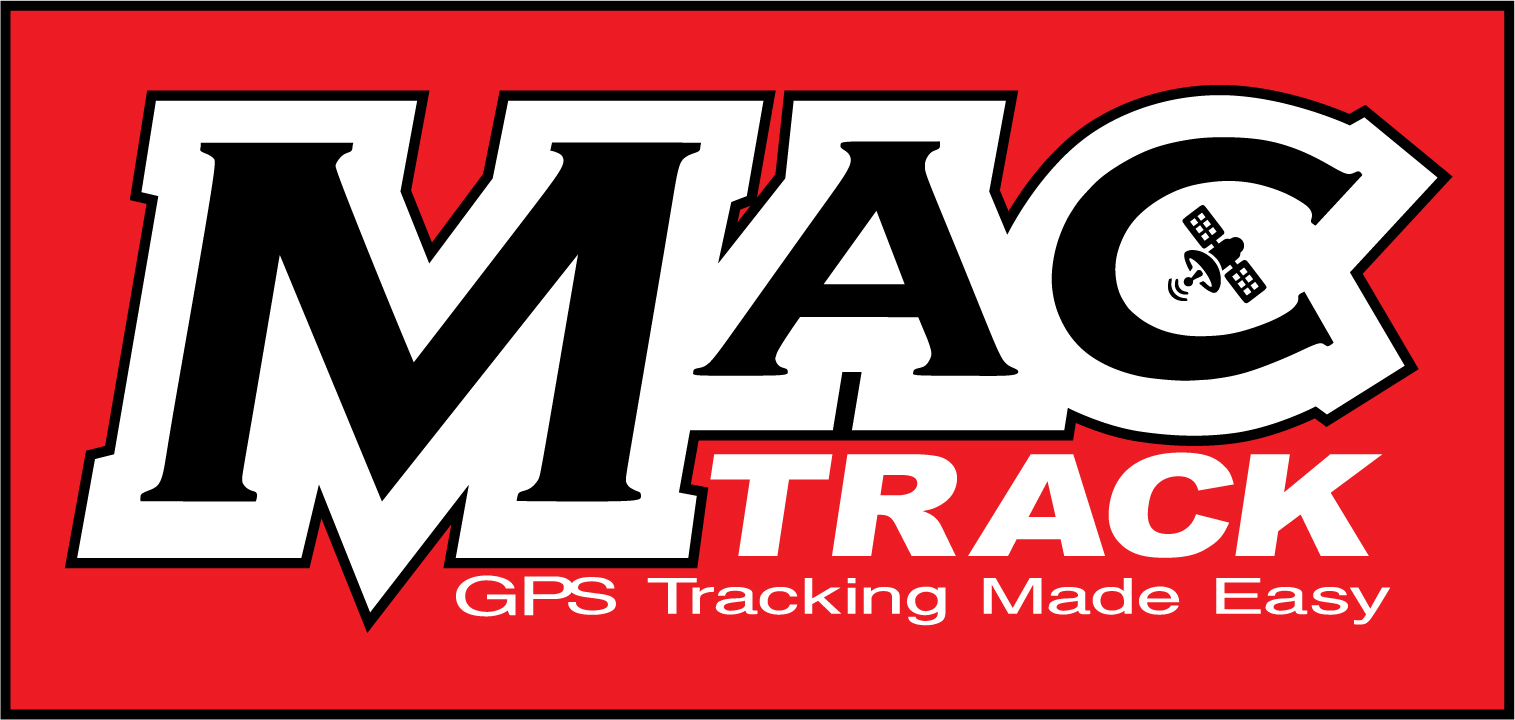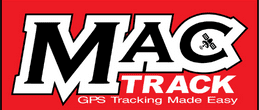In today’s fast-paced world, fleet managers juggle various responsibilities—from optimising operational efficiency to ensuring regulatory compliance. One misstep can result in inflated costs, decreased productivity, or even legal complications. With challenges as diverse as vehicle theft and environmental concerns, it’s crucial to have a comprehensive strategy in place.
Enter MacTrack—a cutting-edge solution designed to make fleet management smoother and more efficient. This guide explores the many challenges in fleet management and demonstrates how MacTrack’s suite of devices and services can be the answer to many of these concerns.
Theft
The threat of theft looms large in fleet management. Stolen vehicles, equipment, or cargo can lead to significant financial losses, operational disruptions, and administrative burdens. But with MacTrack’s suite of devices, fleet managers can significantly fortify their defences against such risks. Here’s just a few ways MacTrack devices deter and mitigate theft:
Real-time tracking & geofencing: MacTrack devices offer continuous location monitoring. Any deviation from expected routes or movements outside predefined areas immediately trigger alerts. This prompt notification system allows fleet managers to act swiftly, ensuring vehicles aren’t misused or taken beyond specified zones.
Remote disable & anti-tamper features: Selected MacTrack devices empower managers with the ability to remotely halt a vehicle’s ignition. If a theft or unauthorised use is detected, the vehicle can be immobilised, aiding in its recovery. Additionally, any attempt to tamper with the MacTrack device sets off an alert, ensuring the device’s continuous functionality.
Data-driven insights: These devices retain detailed vehicle movement histories. This data proves crucial during theft investigations, providing insights into the vehicle’s recent activities and aiding law enforcement.
Driver behaviour and safety
Driver actions directly impact fleet operations. Speeding, harsh braking, and distracted driving can lead to accidents, higher maintenance needs, and increased fuel consumption.
Risky behaviour
Risky driving behaviours, like sudden acceleration or hard braking, can increase accident risks and hasten vehicle wear. Such habits amplify maintenance frequency and potentially shorten vehicle lifespan.
Combatting this necessitates monitoring systems like MacTrack’s devices. These systems track and provide instant feedback on behaviours like rapid acceleration or excessive idling. By integrating such technology and enforcing corrective policies, fleets can enhance safety and vehicle longevity. Furthermore, the MacTrack sAInt Dash Camera, with its dual inward and outward camera capabilities, provides a comprehensive view of both the driver’s actions and the road conditions, reinforcing accountability and promoting safer driving habits.
Training gaps
Often, drivers might not be fully aware of best driving practices, leading them to engage in unintentionally risky behaviours on the road. These unintentional habits can be just as damaging as deliberate risky driving.
Solving this issue involves establishing a comprehensive training program that keeps drivers updated on the latest safety standards and efficient driving techniques. Continuous feedback, paired with refresher courses and hands-on training, can help in bridging these training gaps effectively.
High operational costs
One of the most significant challenges fleet managers face is the accumulation of various operational costs. Expenses related to fuel, vehicle maintenance, insurance, registration, and licensing can quickly escalate if not monitored and managed effectively.
Fuel consumption
Fluctuating fuel prices, inefficient routing, and suboptimal driving habits are major contributors that can escalate the fuel costs of fleet operations. Ensuring drivers are educated about efficient driving practices, paired with smart route planning, can help in mitigating these costs.
Maintenance
While regular wear and tear are expected, unexpected breakdowns can significantly drive up the cost of maintaining a fleet. Implementing a proactive maintenance schedule and leveraging technology to monitor vehicle health can aid in foreseeing potential issues, thereby reducing unforeseen maintenance expenses.
Insurance and licensing
Yearly insurance renewals and licensing premiums often represent a significant portion of the operational budget for fleet management. Regularly reviewing insurance plans and ensuring that all licences are up to date are critical in managing these costs effectively.
Vehicle downtime
Every time a vehicle is unavailable due to repairs or maintenance, it’s an opportunity cost. Unscheduled downtimes can disrupt operations, delay deliveries, and reduce profitability.
Unscheduled repairs
Unexpected accidents or breakdowns can disrupt fleet operations, leading to unforeseen costs and schedule shifts. Addressing this involves using technology like that offered by MacTrack for early vehicle issue detection and prioritising regular driver safety training to decrease accident risks and unplanned repairs.
Maintenance delays
Extended repair times due to part shortages or busy service centres can intensify fleet downtimes, affecting overall productivity. Solutions include partnering with various parts suppliers for faster component access and maintaining service agreements with multiple workshops to decrease wait times and prioritise fleet maintenance.
Regulatory compliance
Regulations related to vehicle emissions, safety standards, and driver work hours vary and can change. Non-compliance can lead to hefty fines and damage the reputation of the business.
Changing regulations
With transportation and vehicular regulations frequently being updated, fleet managers face the challenge of staying current and ensuring that their operations remain compliant. This continuous evolution of rules can sometimes catch operators off-guard, leading to unintentional breaches.
To navigate this landscape, it’s essential to have dedicated personnel or resources that monitor regulatory changes. Additionally, leveraging software tools that provide alerts about upcoming changes or requirements can be invaluable in staying ahead of the curve.
Documentation
Ensuring accurate and updated records for vehicles and drivers is pivotal for regulatory compliance and to avoid potential penalties. Integrating robust fleet management software can centralise and manage records, while automated reminders help keep up with expiring documents and regulatory updates, guaranteeing continual fleet compliance.
Optimal vehicle utilisation
Balancing the workload across the fleet is essential. Overworking vehicles can lead to faster degradation, while underutilisation means resources are wasted.
Mismatched assignments
Inefficient task assignments, without regard to vehicle type, location, or load capacity, can inflate costs and delivery times. Misusing a truck’s capacity or dispatching distant vehicles when nearer options exist exacerbates these inefficiencies. Leveraging fleet management software and tracking devices ensures optimal task assignments, promoting timely and economical operations.
Idle vehicles
Idle vehicles waste space and resources without generating revenue. Regular fleet audits can identify these underutilised assets. To optimise resource utilisation, managers can reallocate, repurpose, or sell such vehicles. Implementing a dynamic vehicle allocation system also ensures even vehicle rotation, reducing idle time.
Route inefficiencies
The efficiency of routes directly impacts fuel consumption, delivery times, and vehicle wear and tear. Poor route planning can lead to increased operational costs and decreased customer satisfaction.
Traffic and delays
Traffic jams, road constructions, or unexpected events can significantly disrupt planned routes, leading to delays in deliveries and additional fuel consumption. In a tightly scheduled operation, such delays can have cascading effects on other assignments and impact customer satisfaction.
Overcoming this challenge involves integrating advanced routing systems that account for real-time traffic conditions. This means routes can be dynamically adjusted to bypass congested areas, ensuring timely deliveries and more efficient fuel usage.
Ageing fleet
Older vehicles tend to be less fuel-efficient and are more prone to breakdowns. They might also lack modern safety features, increasing the risk factor.
Increased maintenance
Ageing vehicles demand more maintenance, increasing costs and downtime. To combat this, proactive maintenance schedules, informed by data and vehicle monitoring systems, can pre-empt issues. Additionally, a phased fleet renewal plan ensures a balanced age profile, preventing simultaneous high maintenance demands.
Lack of modern features
Older vehicles might miss out on modern safety and efficiency features, making them riskier and costlier. Addressing this requires assessing the fleet for potential upgrades or replacements. Retrofitting with modern safety tech can boost their capabilities, but sometimes, opting for newer models is the best long-term choice.
Environmental concerns
With global emphasis on reducing carbon footprints, there’s increased pressure on fleets to adopt sustainable practices. To stay competitive and responsible, fleets must prioritise eco-friendly measures, from investing in fuel-efficient vehicles and technologies to implementing green driving practices and maintenance routines.
Emission standards
With the push for sustainability, fleet managers face pressure over vehicle emissions. Older or poorly maintained vehicles risk regulatory fines and environmental harm. Addressing this involves consistent emissions tests and understanding changing regulations. Solutions include retrofitting vehicles with emission-reducing parts or upgrading to eco-friendlier models.
Fuel inefficiencies
Inefficient vehicles elevate costs, emissions, and frequent refuelling stops. Modern devices can detect and alert for fuel-inefficient driving patterns, aiding in real-time corrections. Regular engine checks and maintenance, particularly focusing on fuel systems, are essential devices by MacTrack can alert fleet managers when this routine maintenance should be performed. Additionally, driver training on fuel-efficient habits, combined with device feedback, significantly boosts overall fleet fuel efficiency.
Keeping up with technological advancements
The fleet management industry continually evolves. New technologies emerge that offer better efficiency, safety, and cost-effectiveness.
Outdated systems
Using outdated tech can limit a fleet’s efficiency and competitiveness, causing missed optimisation opportunities. To stay competitive, fleets should regularly update their tech infrastructure, investing in modern software and solutions like those offered by MacTrack to enhance operations.
Training gaps
Introducing new tech without proper training can lead to underutilisation or misuse, causing inefficiencies or errors. Addressing this necessitates thorough training when new systems are adopted, along with ongoing courses and feedback to maintain staff proficiency.
Final words
The complexities of fleet management are undeniable, with each challenge demanding a unique solution. Yet, as we’ve seen throughout this guide, many of these issues can be mitigated or even eliminated with the right technology and approach.
MacTrack, with its advanced features and user-centric design, stands as a beacon for those in the industry seeking to streamline operations, boost safety, and cut costs. Whether you’re grappling with theft concerns or looking to optimise route efficiency, MacTrack has the tools you need. Don’t let challenges slow your fleet down. Take the proactive step: check out MacTrack‘s offerings today and drive your fleet into a future of unmatched efficiency and safety.

